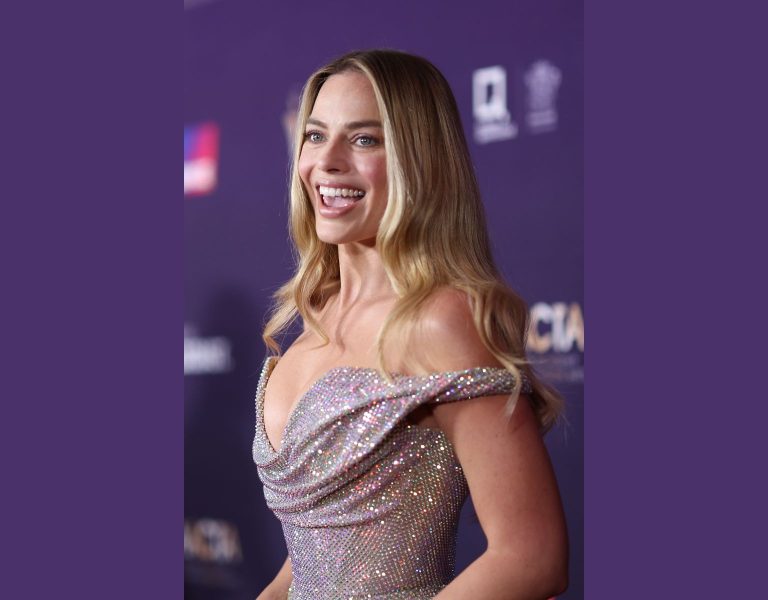Cinematographer Sunshine Hsien Yu Niu opted for a handheld approach for her NFTS graduate film, Rock, Paper, Scissors, based on a true story.
Rock, Paper, Scissors follows a father and son who run a makeshift hospital on the front line. They face a tough decision when a platoon of Russian soldiers approach their building and must find a way to protect both their patients and themselves.
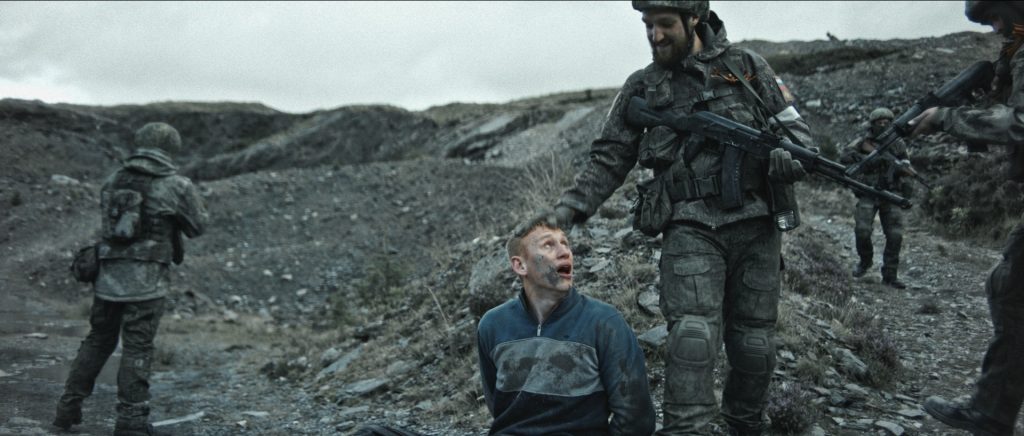
British Cinematographer (BC): Why did you decide to study cinematography? Please tell us a little bit about your filmmaking journey so far, as well as your influences and inspirations.
Sunshine Hsien Yu Niu (SHYN): When I was at university in Taiwan, I volunteered in a children’s prison where they kept children from nine-18 years old who had accidentally hurt their abusive parents whilst protecting themselves, or stolen some food to feed themselves. No one was allowed to teach these children the concept of “future” nor “hope.” All these kids were to be kept locked away until they reached 18 years old and would forever have a label on their ID. They would never experience an ordinary life.
During my time there, we volunteered to screen some movies from different countries and languages about making dreams come true. Soon, they started to ask if they could be a soldier to protect their families, or to be a chef so that their younger siblings would not starve ever again. It was at this moment that I felt the power of cinema, and the power of images beyond language. I decided that if I can ever shine a light on someone else’s life through cinema, that will be the career that I want to dedicate my life to.
I fell in love with visual language and the power of lighting while studying at London Film School whilst on set as a spark as well as DPing some short films. Underneath was the first short film that I lensed which won the Panalux Award for Best Cinematography. A sci-fi short, We Choose to Go was awarded the golden prize at the Kodak Awards, while Maeve in the Dark screened at Camerimage Film Festival. After freelancing for a couple of years I decided to apply to the NFTS and focus on my career as a cinematographer.
Influenced predominantly by Asian cinema while growing up, I was hugely inspired by Chung-hoon Chung ASC (DP of Oldboy, Lady Vengeance, Stoker) and Christopher Doyle HKSC. It’s how they make the audience feel, smell and experience the story as if you are right next to the character in the movies. Their use of visual language, lens choices, camera movement, colour, and the shape of light to trigger the memory of the common experiences of the viewer and bring them into the movie journey from the beginning to the end deeply fascinated me.
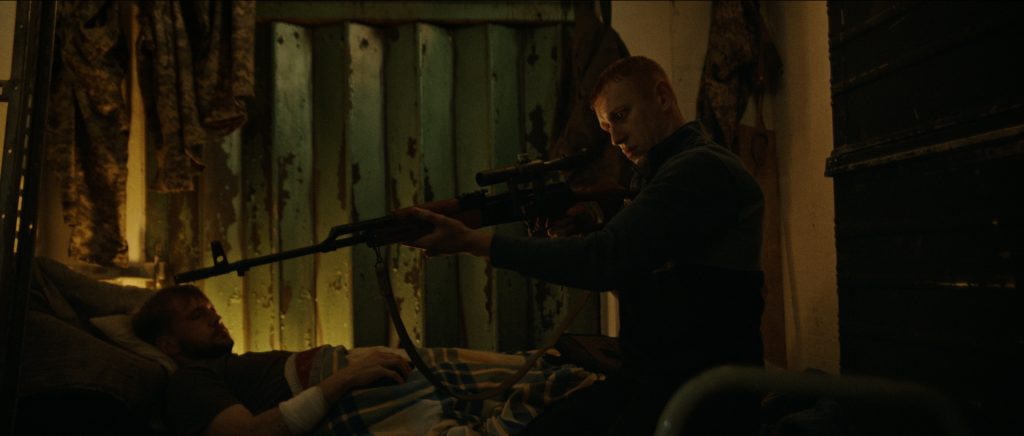
BC: What were your initial discussions with the director, Franz Böhm, about the visual approach for your film? What look and mood were you trying to achieve?
SHYN: Rock, Paper, Scissors is a film based on a true story. We made an agreement that we need to make sure the audience is in the story with the characters at every single moment. We needed the visuals to represent the environment as much as possible.
For the interior, our main reference was Son of Saul, where we created an environment that was all lit by small practical sources, true to the reality of limited power supply. We can barely see people’s facial expressions, but we can feel the danger surrounding them.
As for exterior, our main references were All Quiet in the Western Front and Jarhead, the example being when you can see until the horizon but you can’t see the enemy. We also chose some Soviet vintage lenses to give the audience the sense of danger and enormous pressure on Ivan’s shoulders.
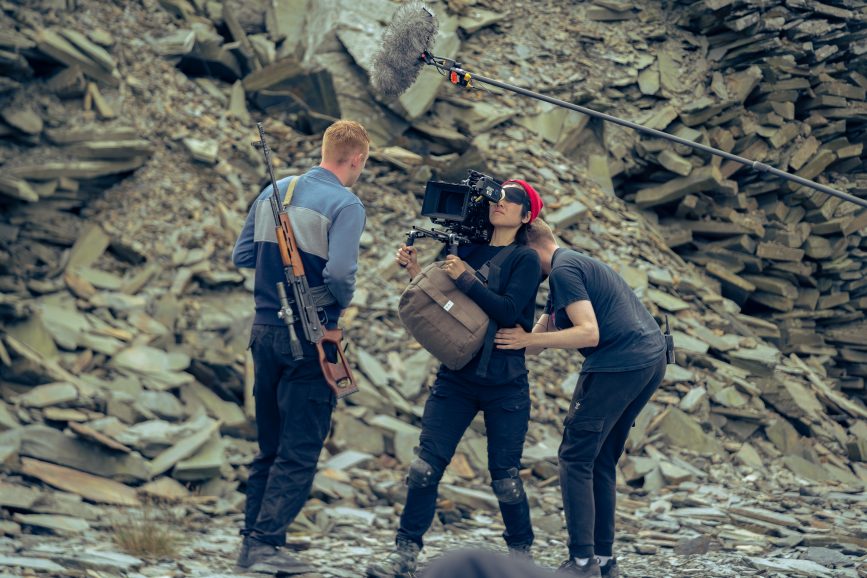
BC: What were your creative references and inspirations for your film? Which films, still photography or paintings were you influenced by?
SHYN: We went to the Imperial War Museum to watch an exhibition and some documentary screenings of the Ukrainian conflict in The Frontline Club several times with all the HoDs. We wanted to understand the weather conditions, how they dress, what the world sounds like in reality to recreate it visually without getting there physically.
It was extremely helpful to watch the documentaries and see diary excerpts in the exhibition. The cold, wind, blood and other harsh conditions that the protagonist is facing are on our shoulders as a team to create that world and bring the audience next to the characters and to be truly immersed in the story.
BC: What filming locations were used? Were any sets constructed?
SHYN: We shot our shelter location in a working brewery. Our extremely talented production designer Shivani Bhawnani transformed the brewery into a shelter with an emergency surgery room; bunk beds for the elderly and women; a place for wounded soldiers to rest and recuperate and a bunker entrance to the outer world.
The extensive research on the pattern and colour of the fabric used, all the medication, furniture, the specific weaponry and most importantly the practical lamps used was crucial. We had various long conversations figuring out the lamps being used in shelters such as the one we were emulating, how they’re saving electricity and its instability. We discussed the alternative methods of illuminating the space and found out that people in villages with poor power in South Asia or Africa have been illuminating light through plastic water bottles that are filled with water and bleach. The substance diffuses and spreads the light to the dark room with a very small source of light.
The exterior was a quarry in North Wales with a cruel environment and brutal weather. Franz, Shivani and I had been searching the right quarry for the geography of the hideout and bunker location and made six visits to Wales prior to the shoot. We were able to utilise the geography of the location and map out the route of the hideout and interrogation with the Russian soldiers.
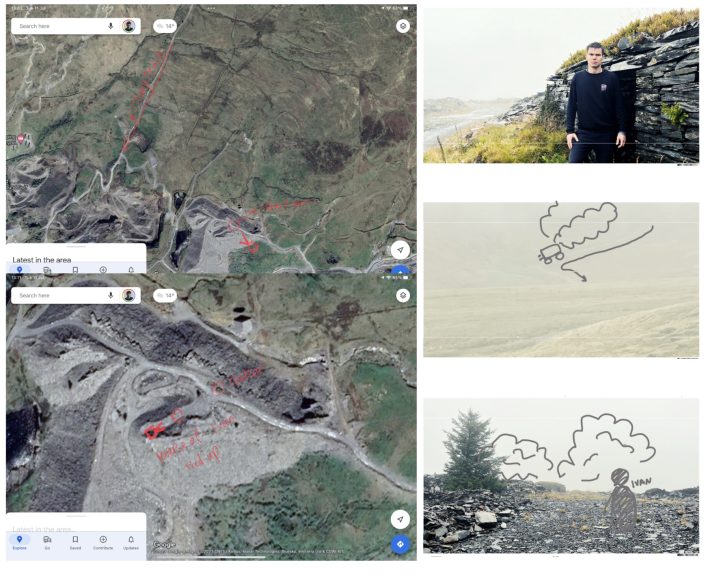
BC: What camera and lenses did you choose and why? What made them suitable for this production and the look you were trying to achieve?
SHYN: Due to the character-centric approach we wanted a set of lenses that had a strong distortion on the edges, beautiful characteristic bokeh and clean in the centre. I’m extremely grateful for the support of Greig Fraser ASC ACS, who kindly lent us his set of Iron Glass rehoused vintage Soviet lenses that were made in Ukraine. These included Miranda, Helios, and Vivita, all with different characteristics. It helped me tremendously to assign specific lenses for different purposes on set to push the story and create tension within the visual. For me, the camera and lenses are always there to help serve the story rather than a distraction.
Shooting in large format allowed us to utilise the lenses to the fullest as a storytelling tool, to not only create the separation of space but also allow us to experience a wider view of the environment and all the characteristics of the lenses. Thanks to ARRI London who guided us through testing these lenses, we were able to see lens-by-lens how bokeh reacts, focus breathing and distortion.

BC: What was your general approach to lighting?
SHYN: The main approach for this film was to represent reality and transport the audience to the current conflict. Our tutor Stuart Harris BSC reminded us that no matter how dark the scene is lit, we need to see their eyes. That became one of my greatest challenges; to achieve a contrasty dark look constantly when following Ivan the protagonist walking around the room and staying consistent with the underground shelter only having limited electricity and small sources.
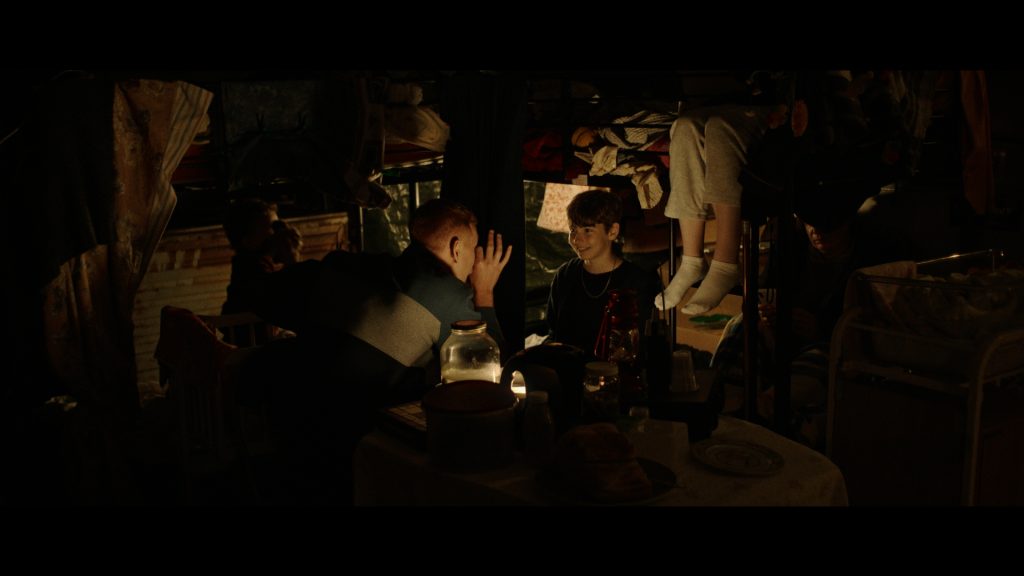
BC: What was the trickiest scene to light?
SHYN: When filming we wanted the actors to believe this is the reality they are living in, so Franz, the director, and I figured the only way we can avoid interrupting the performances was to commit fully to shooting handheld, covering the scene in different angles and never call cut until the scene is finished.
This created a huge complication in lighting in the small interior shelter location as Ivan walks from room to room, delivering dialogue in different parts of the room. It was important for me to make sure the way I lit the set served the way we shoot the film, and provided a safe environment for the actor’s performance without getting interrupted or disturbed by film lights.

BC: Who did the grade and what look did you want to achieve?
SHYN: Chris Bell from Wash was an amazing colourist to collaborate with. His talent for finding the look for the film and focus on extreme details to make sure shot after shot was flawless.
We choose to go for a very dark, contrasty, crisp image for the interior shelter to not only present the danger surrounding the protagonist but also try to create the humid and cold underground feeling. As for the exterior, in order to represent the cold, brutal, bleak environment we went for a cooler look while preserving the colour of skin tone.
I remember the time we spent together in the grading suite and fixing it frame-by-frame, and how fast the time flew by! It was a wonderful experience to be able to trust an artist like Chris.
BC: What is your proudest moment from the production process?
SHYN: Being able to shoot this film with the technical team that I dreamed of having is the best feeling! We were shooting at the top of the quarry in North Wales for four days under extreme weather conditions of sudden rain and sun. First AC Josh Wooster, second AC Charlie Hudson and gaffer Piotr Plencler were the golden triangle of the shoot who kept the equipment safe and functioning while up and down the hills and, most importantly, protected and supported other crew members when they needed help.
I’m extremely grateful to have been able to form a team and mutual trust between us. They believed in my vision and I believed in them to support the film throughout the whole shooting period.
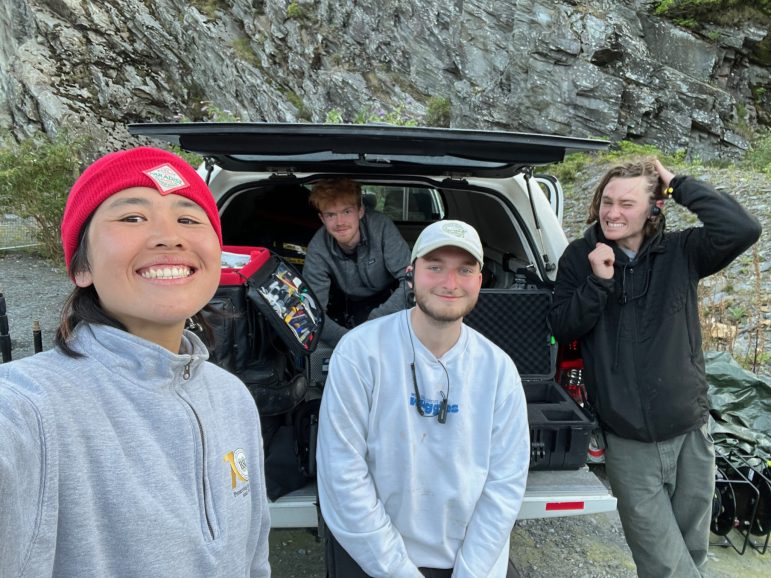
BC: What lessons did you learn from this production that you’ll take with you onto future productions?
SHYN: The most valuable experience that I would recommend is to have a strong triangle relationship with both the director and editor prior to the shoot.
The collaboration between Franz and Carmela Schönenberger, our editor, was absolutely life-changing. 10 days before the shoot, Carmela, Franz and I had a long conversation regarding the rhythm, pacing and structure. We discussed in depth how long each section should be on screen, when are the times to build up the climax, when to present a false ending to the audience, where we want to put audiences’ emotion, who to emphasise at what point… It was extremely important for me to have this information and rhythm in mind to know exactly how and when to react to the actor, how fast or slow my pan was, how much time Ivan was facing when I was on his face to delay the audiences’ reaction etc.
I felt I managed to capture Ivan’s every breath, his every decision-making moment, all the determination to save his father and the people in need of help in the shelter. With a bigger picture of how the film is going to end, the director allows me to place the audience where they need to be and even deliver some different subtle camera movements to enhance the emotional journey.
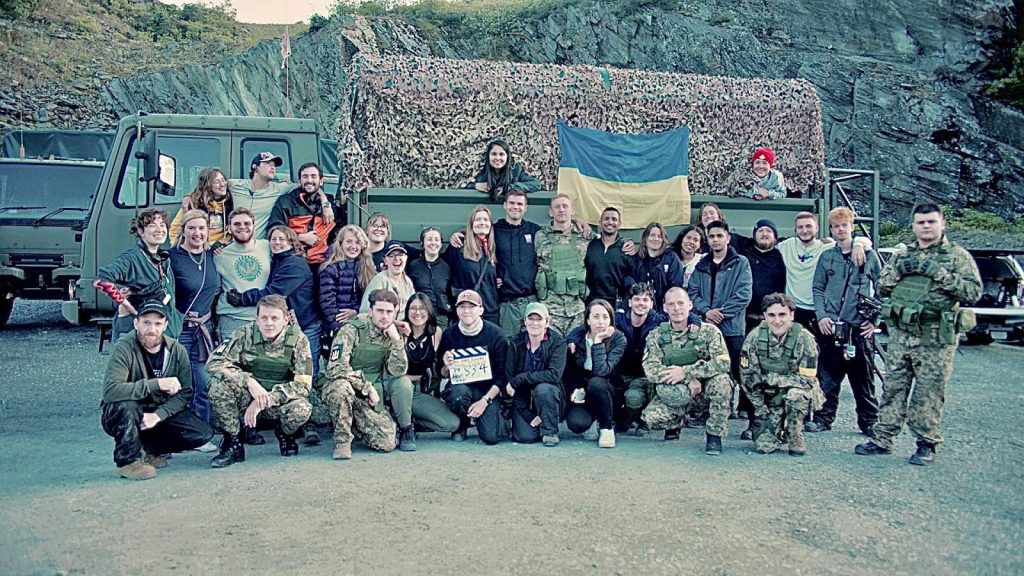
BC: What would be your dream project as a cinematographer?
SHYN: My dream is to find a project where the director and HoDs are all fighting for more than 100% from pre-production to post-production to tell a story that will influence something or shine a light into someone’s life.
My mother always said, “I will forever support you to become a filmmaker as cinema is the only place where dreams can come true.“
Rock, Paper, Scissors has been one of these dream projects!
BC: Is there anyone not yet mentioned that you’d like to highlight?
SHYN: There are many people to thank in this project, it is cliché but without any single one of them this film would not be complete.
Thank you Stuart Harris BSC for helping me to track down which rental houses have vintage Ukrainian lenses, and thanks to Duncan Bruce who introduced me to Simon Surtees and Luke Harris-Perfect at ARRI for helping us on this project.
Thanks to every single person that was involved in this project. I will forever remember how amazing it is to film with a group of friends, to make film come alive and I hope the story can be seen by more people and support those in need.
Read the rest of our series spotlighting the NFTS’ 2024 cinematography cohort.



